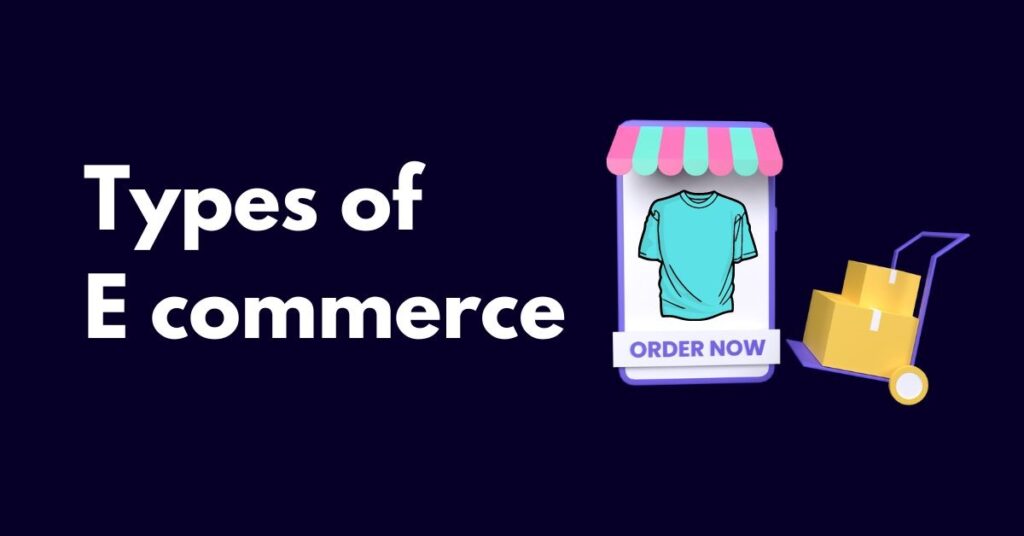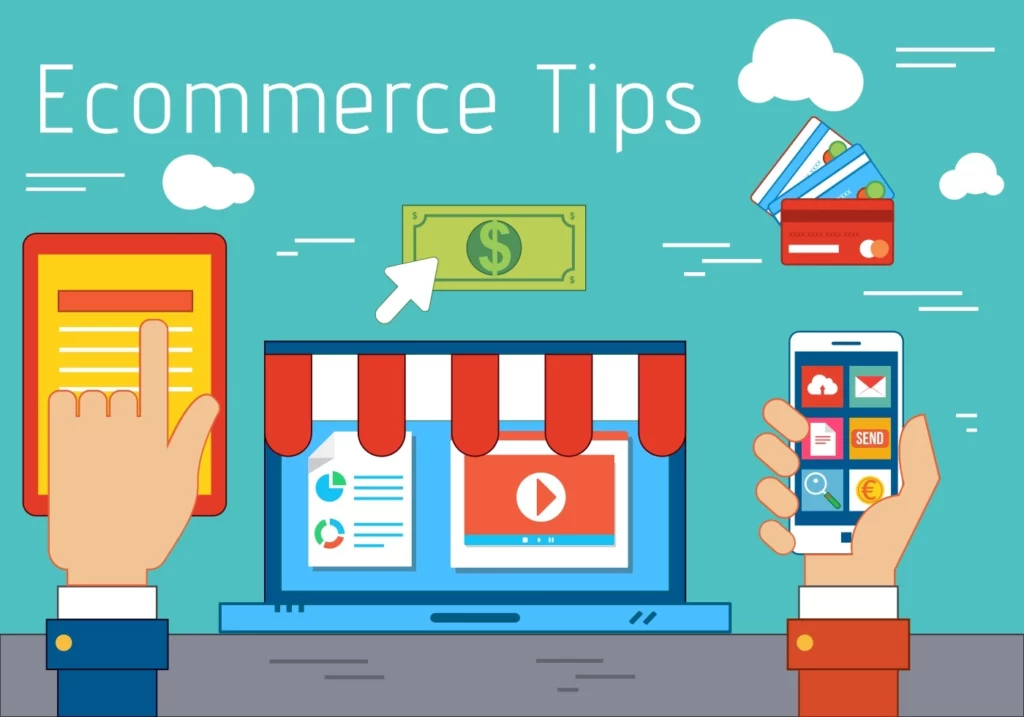
What is E-Commerce Marketing?
E-commerce marketing is the process of raising knowledge of and encouraging participation in a company that offers its goods or services electronically.
E-commerce marketing involves using advertising strategies to attract visitors to your online shop, turn those visitors into buyers, and keep those buyers coming back for more.
Marketing techniques used both on and off your website make up a comprehensive e-commerce marketing plan. With the help of an effective marketing strategy, you can increase brand awareness, foster customer loyalty, and ultimately increase online sales.
Types of E-Commerce Marketing

There are various types of e-commerce marketing strategies that businesses can use to promote their products or services online. The following are a few of the most popular kinds:
1. Search engine optimization (SEO)
This involves optimizing your website to rank higher in search engine results pages, which can increase visibility and attract more organic traffic.
2. Pay-per-click (PPC) advertising
To achieve this, in order to do this, you must place advertisements on other websites or search engine results pages and pay each time a user clicks on them.
3. Social media marketing
This involves using social media platforms to promote your products or services, engage with customers, and build your brand.
4. Email marketing
This involves using email to communicate with customers and promote your products or services.
5. Content marketing
This involves creating and sharing valuable content (such as blog posts, videos, or infographics) to attract and engage potential customers.
6. Influencer marketing
To market your goods or services, you must collaborate with influencers—individuals who have a sizable social media following.
7. Affiliate marketing
This involves partnering with other websites or individuals to promote your products or services in exchange for a commission on sales.
8. Retargeting
Retargeting is another strategy that can also involve showing ads to users who have previously visited your website or interacted with your brand in some way.
E-Commerce Marketing Tips

Firstly, utilize social media platforms like Facebook, Instagram, Twitter, and LinkedIn to create brand awareness, engage with your audience, and promote your products.
Secondly, invest in email marketing campaigns to target and engage with your subscribers and customers. Use personalized and relevant content to increase engagement and conversions.
Thirdly, leverage the power of customer reviews and ratings to build trust and credibility. Encourage your customers to leave reviews, and respond to both positive and negative feedback in a professional and helpful manner.
Fourthly, use pay-per-click (PPC) advertising to reach new audiences and increase conversions. Research and target relevant keywords and demographics, and use compelling ad copy and landing pages to drive clicks and sales.
Fifthly, create informative and valuable content like blog posts, videos, and infographics to educate and engage with your audience. Share your content on your website, social media, and other platforms to increase your reach and drive traffic to your website.
Lastly, optimize your website for search engines (SEO) to increase organic traffic and visibility. Conduct keyword research, optimize your product pages, and build quality backlinks to improve your search engine rankings and attract more customers.
E-Commerce Marketing Strategy

An e-commerce marketing strategy is a comprehensive plan that outlines how a business will promote and sell its products or services online. Here are some key steps to developing an effective e-commerce marketing strategy:
1. Define your target audience
Identify your ideal customers based on demographic, psychographic, and behavioral factors, and develop buyer personas that represent your target audience.
2. Conduct market research
Analyze your competition, identify trends in your industry, and determine the most effective marketing channels for reaching your target audience.
3. Set specific, measurable goals
To begin with, firstly, define what you want to achieve with your e-commerce marketing strategy, such as increasing website traffic, improving conversion rates, or boosting sales.
4. Develop a content strategy
Create a plan for creating and publishing high-quality content that educates and engages your target audience, such as blog posts, videos, social media posts, and email newsletters.
5. Optimize your website for conversions
Make sure your website is user-friendly, mobile-friendly, and optimized for search engines, and use conversion rate optimization (CRO) techniques to improve your website’s ability to convert visitors into customers.
6. Use multiple marketing channels
In addition, utilize a mix of marketing channels, such as search engine optimization (SEO), pay-per-click (PPC) advertising, social media marketing, email marketing, and content marketing, to reach your target audience across multiple platforms.
7. Use data analytics to track and measure performance
Additionally, it is recommended that you use tools such as Google Analytics to track the performance of your marketing campaigns. This will allow you to make data-driven decisions and continuously improve your strategy over time.
8. Continuously test and refine your strategy
Experiment with different tactics, analyze the results and make adjustments as needed to optimize your e-commerce marketing strategy for maximum effectiveness.
Summary
- E-commerce marketing promotes and sells products online using various tactics.
- The goal is to attract and engage potential customers, drive traffic, and increase sales and revenue.
- Tactics include social media marketing, email marketing, pay-per-click advertising, content marketing, and search engine optimization.
- Best practices include analyzing and optimizing campaigns based on data and metrics, providing a seamless shopping experience, leveraging customer reviews and ratings, and staying up to date with industry trends.
FAQ
Q: What are some common e-commerce marketing tactics?
A: Some common e-commerce marketing tactics include social media marketing, email marketing, pay-per-click advertising, content marketing, search engine optimization, and influencer marketing.
Q: How can I measure the success of my e-commerce marketing efforts?
A: You can measure the success of your e-commerce marketing efforts by tracking various metrics like website traffic, conversion rates, sales revenue, customer engagement, and social media metrics.
Q: How can I improve my e-commerce marketing strategy?
A: You can improve your e-commerce marketing strategy by regularly analyzing your data, testing and optimizing your campaigns, staying up to date with industry trends, and focusing on providing value and personalized experiences for your customers.
Q: What are some best practices for e-commerce marketing?
A: Some best practices for e-commerce marketing include targeting your audience with relevant and personalized content, providing a seamless and user-friendly shopping experience, leveraging customer reviews and ratings, and Your ads should be constantly tested and improved for better outcomes.


